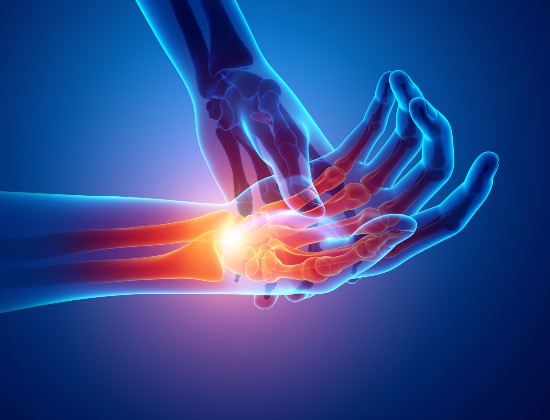Thumb fracture
The thumb is connected to a bone in the hand (first metacarpal) and is made up of two bones: the distal phalanx, which is the top part between the knuckle and the tip of your thumb; and the proximal phalanx, which is between the knuckle and the base of your thumb. Breaking either of these bones can make it difficult to hold an object, and can also lead to osteoarthritis later in life.
Breaks near the joints (known as Bennett and Rolando fractures) can be the hardest to treat and are considered the most serious.
How is a thumb fracture caused?
A broken thumb is usually caused by landing on it when falling, or when it’s pulled back catching a ball or other object. Other breaks are caused by twists, common in sports such as wrestling, football, skiing and hockey. Using protective gloves, padding or taping can help protect the thumb from injuries.
What are the symptoms?
Extreme pain , swelling, tenderness, deformity, and not being able to move the thumb, are all symptoms of a thumb fracture. Any one of these symptoms alone may indicate a fracture.
How is it diagnosed?
You should ask for medical advice as soon as possible as early treatment can help the thumb to recover more quickly, especially if bones are misaligned (out of place). Having discussed the injury, your specialist will usually back up the diagnosis with an X-ray.
How is it treated?
Non-operative treatment: if the break is in the middle of the bone, and not displaced, you may be able to wear a splint for a few weeks while it heals. You may also need regular X-rays to check that the bone is knitting together correctly and will usually be given exercises to help rebuild the thumb’s strength and increase flexibility.
Surgery: if the bone is displaced, or there are broken fragments of bone, you may need surgery to fix them with wire, pins, plates and screws until they have healed. Usually it will take about 6 weeks for such a fracture to heel. You may also
Important: This information is only a guideline to help you understand your treatment and what to expect. Everyone is different and your rehabilitation may be quicker or slower than other people’s. Please contact us for advice if you’re worried about any aspect of your health or recovery.


